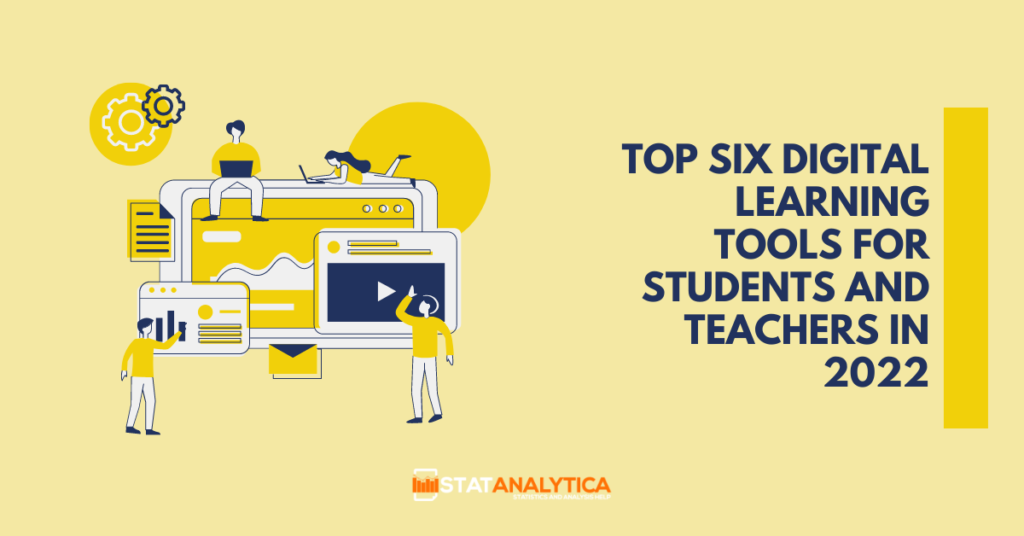When it comes to knowledge diffusion, technology plays a critical role. Many programs and technology tools are available on the market, but just a few are well-liked by students and teachers alike. We’ve compiled a list of six digital learning tools that teachers and students may utilize to broaden their knowledge while making learning more convenient and enjoyable about lms platform.
List of Top Six Digital Learning Tools For Students And Teachers
Table of Contents
1. Google Classroom
Teachers and administrators can use Google Classroom to manage assignments without having to deal with piles of paper. Using Google Classroom, teachers and students may easily share files with each other, making the learning process more efficient. A place where students can ask questions about classroom lessons and get answers from their teachers and fellow students is available. Students can also access study resources that teachers have posted on the school’s website for them to review at their convenience. Google Drive, Google Sheets, Docs, Slides, Google Calendar, and Gmail are all part of Google Classroom, making it easy to create and distribute assignments. (Know how to submit the assignment on Google Classroom)
2. Reverse image Search
This is a well-known tool that the community has found to be extremely beneficial. Image search algorithms are used instead of word input in this application. When searching for photographs and items, the user no longer has to come up with a list of words and phrases to use.
If you’re looking for a certain photo, you have three options:
- Use the “Keyword” field to search.
- Search with an image.
- Use the image’s URL to search.
When working on assignments, projects, and presentations, students can make use of the free reverse image search tool. Enter the website name into your browser to begin looking for photos with the program. Other photos and products that fit the same pattern will also be included in students’ lists of comparable items. Instead of downloading a photo and then posting it, a direct URL preserves students’ computers from virus dangers.
3. Kahoot
For students who want to learn through playing games or taking multiple-choice tests, this is their platform. Using this web-based digital tool, teachers can create additional quizzes and online conversations for academic lessons. Students can play and study at the same time by answering questions that are displayed on a screen in the classroom. This not only increases student involvement, but it also provides a dynamic, sociable, and engaging learning atmosphere.
4. OneNote
Microsoft’s OneNote is a free note-taking program. As a digital notepad, OneNote may be used by students to keep their information in order. You can set up several notebooks for each subject or topic and add notes to them. Want to take notes more quickly? When you take a picture of your whiteboard or presentation, OneNote will automatically improve the quality of the image to make it more readable.
When it comes to taking notes, OneNote allows users to use both their hands and a stylus. Alternatively, students can record lectures and sync their notes with the audio to add context.
Aside from locking notes, students can add sticky reminders, collaborate with other students, and sync their notes across many devices with the help of passwords.
5. Evernote
For students who need to keep track of their notes, Evernote is a great option. In addition to capturing digital material, Evernote enables students to process handwritten notes into their notebooks. A wide range of note-taking forms is available to students, including text notes as well as audio and visual clips from websites, video recordings, and more. Student note-taking has never been easier with Evernote’s pen support.
The virtual notebooks of Evernote keep track of all of your classroom notes. Thanks to Evernote’s functionality of scanning handwritten notes and uploading them to your online notebook, it’s easy for students to keep all of their notes in one place. Even handwriting may be found quickly and easily with a robust search.
The built-in presentation feature of Evernote allows students to share their notes and ideas with others. The Evernote app also allows students to preserve their teachers’ emails in the app so that they may refer back to them when needed.
6. elink
According to the AASL (American Association of School Librarians), the greatest website for teaching and learning, elink has emerged as our go-to tool for content curation and organization. Use this tool to create lesson plans, resource pages, faculty updates, book recommendations, and much more! In order to make studying more interesting and participatory, elink can be used by both students and teachers.
Teachers are constantly looking for new ways to incorporate technology into their classrooms by conducting research, creating reading lists, preparing lessons, and collecting digital resources to keep their students engaged. Teachers may use elink to identify the best stuff on the web and display it in a visual format for improved learning, and that’s just the beginning.
Because it’s the only platform out there, students can quickly and easily gather information from all over the web and create beautiful, shareable content. Every website has the capability of embedding information created by students.
So, these are the best tools for students. If you use these resources, you may expect your online education to go from good to great.


